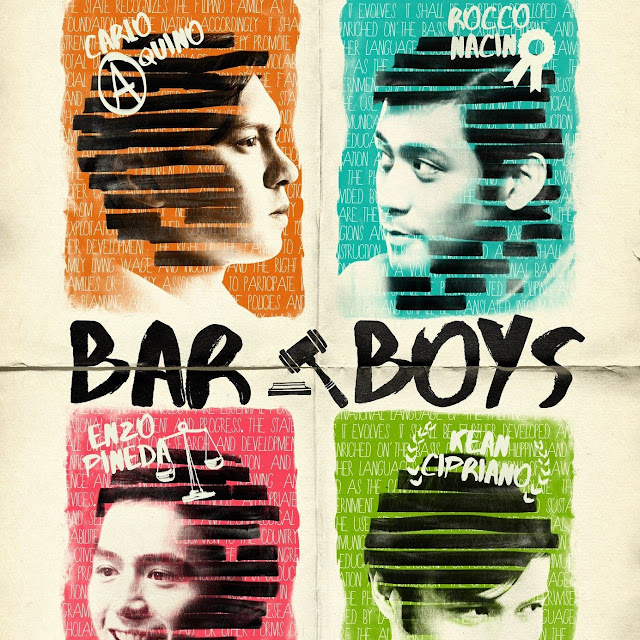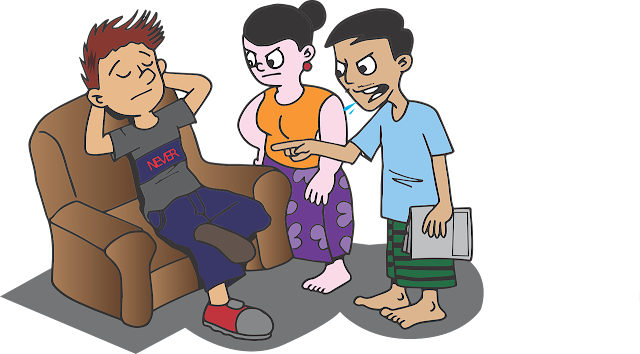Muslim Arts, Culture, History: Key in Understanding the ‘Moro’ Problems in Mindanao
This paper implicates various areas
of knowledge as to expound the complexities of the subject in hand. Echoing the
Muslim perspective of the Moro Problem in the Philippines vis-à-vis the
misconceptions that surround the issue, it is imperative to disclose that the
author of this paper is a non-Muslim who academically refers from a Muslim
scholar, Abraham P. Sakili, and his relevant works, Book - Space and Identity:
Expressions in the Culture, Arts and Society of the Muslims in the Philippines,
Seminar Proceeding – Foregrounding Historical Truth and Cultural Reality Central
to the Understanding of the Mindanao Problem, and other publications in print. Ultimately,
this paper aims to explain the interrelation of the multiple factors causing
the problems and their substantial impact to the people, both Muslims and
non-Muslims, and to the culture which is generally shaped by religion,
traditions, and education. The author, being a film student views the topic as
ideological in nature where the media of the arts are highly operated by
opposing forces. This paper also focuses essentially on the nature of Muslim
art as a strong signifier to the religion, Islam, and as an essential tool to
further or regress social, cultural, and political intentions of both dominant
and marginalized sectors of the Philippine society.
The
Multi-Dimensional System Problem (according to Sakili)
There are common misconceptions
about the continuing problems in Mindanao. Hugely caused by the ruling ideology
– the Roman Catholic Christianity which is the major religion of the country,
notions about the Muslims and the religion of Islam are unjustly preconceived by
Filipino generations that are non-Muslim. The ruling ideology is thus perpetuated
among interrelated systems of society. The unfair atmosphere of understanding
Mindanao, its people, religion, and history is rooted in the cultural
assimilation launched by central government of the country. As ideology becomes
hegemonic, Filipinos who are mostly Christians resulted to marginalizing
non-Christians. For one, the unitary system of the Philippine government is the
apparent structure which manifests the imbalance. By imbalance I mean the
underrepresented sectors of society primarily the Muslim, let alone other cultural
minorities. This form of government undermines genuine ‘unity in diversity’ as
such system produces a type of education that does not do justice to correctly
and sufficiently represent Mindanao, its problems, religion, and people. This
evidently resulted to “[persistent] negative psychological ‘Moro image’” by the
majority of Filipino people. Moreover, such administrative structure greatly
affects and even impedes true economic progress as resources are not rightfully
extracted nor equally distributed among the lands of the country – making
Muslim provinces “the poorest of the poor” while deliberately creating an
‘imperial Manila’. With this kind of governance comes unjust policies. For one,
state-sponsored resettlements to Mindanao over the last century impacted the
agrarian and demographic structures of the mainly Muslim regions then.
For Sakili, cultural assimilation
means cultural death. He proves this and tries to counter such attempt by
detailing the interrelated dimensions and levels of analyzing the Mindanao
problem and proposing “remedies” to regulate, improve, and even change the status
quo. The first level or the ‘surface’ level focuses on the
structural-functional mechanisms as abovementioned; the second one signifies
the historical contexts which the two-nation theory was to be deduced; while
the cultural dimension that centers at asserting nationality and preserving
identity is considered to be the third level and the fundamental root of the
problems.
These
characterizations of events and apparatuses evidently clarify the preconceived
notions of a non-Muslim like me who usually only reflects the surface level of
analysis. Consequently, the deeper roots of the Moro problem lies in the
historical and cultural dimensions which, more often than not, are disregarded
or worse, misrepresented in the historical narrative and cultural consciousness
of the Filipinos. Finally, Sakili sums up the Moro problem to be “a
multi-dimensional system problem at the bottom of which is the fact that the
Muslims or Moro constitute a nationality or Bangsa
culturally distinct from and historically older than the Filipino
nationality,” which is heavily reflected in his hierarchical approach in
understanding the Mindanao problem.
His approach – cultural rather than only
heavily relying on structural-functional paradigm, fills the gap between what
was commonly conceived of historically and what the phenomena truly are. It is
Sakili’s effort to put emphasis not only on the historical but also the
cultural aspect, particularly the Islamic perspective, which help further and
better the examination of the enduring issues facing Mindanao, its people and
religion. Conversely, he has also
suggested measures which may lead to the improvement of the situation, if not
solving them totally. It can be surmised from his proposals that if and when
the form of government is changed, only then legitimate development can be
finally realized. This is to shift from being a unitary system to a federal
one. I think he presumes that everything will follow if such can be the case:
political empowerment through equal representations, long overdue economic
growth, appropriate recognition of ancestral domain, and inclusive and just
educational system. Hopefully, along with these ‘remedies’ come a diversified
but united nation – a nation with an identity that resonates with every
Filipino, regardless of ethnography, history, and religion.
The
Muslim Art
As revealed that the Moro problems
are not solely highly structural but also historical and pertinently cultural,
the arts of the Philippine Muslim have a significant role in depicting and even
explaining the bases which its religion essentially signifies. There are
certain nuances not only in the term of the Muslim art but also in its nature;
by this I mean not all Muslim arts are Islamic, and on this regard and despite
that, the nature of such art heavily depends on the principles of Islam as a
religion and way of life. The premise which the root of the Moro problem
originates from is on its assertion and preservation of its Islamic nationality
and identity. Such ideological intention is further contextualized from the
historical truth that the Muslims consider themselves as Bangsa Muslim or Bangsa
Moro (Bangsa meaning nationality,
thus Moro Nationality). Additionally, the determination to preserve one’s
identity is brought not only by mere religious doctrine but also significantly
by external forces that dare to ‘assimilate’ into the original environment of
Islam. History proves that such attempt by the non-Muslims is just to dominate
ideologically as to cause hegemony leading to cultural death in the disguise of
an objective ‘national unity’. By cultural death I mean loss of traditions,
alterations of customs, and infiltration of social, political, and religious mechanisms
that govern said culture; and by objective national unity I mean the government
initiative to build a more legitimate representation of Filipino people as a
nation with one identity. However, as if these are not yet as much problematic
as they are, to assimilate a culture is actually to kill it, while to aim for a
national identity only to formulate a homogenized attributes over the sectoral
and distinct parts of societies is to do great injustice to these segments. In
relation to this, the role that the Muslim arts play to the Moro problem is
signified in its representation and operation of its own ideology from which it
tries to manifest and perpetuate as to accomplish its intention of asserting
and preserving its own ideological stance and truths.
The Philippine Muslim arts serve as
material manifestations of the ideologies – be it religious or spiritual, they
rely on. The concept of ‘Tawhid’, the
most important doctrine of Islam, the monotheistic view and belief in the ‘Divine
Unity’, is the central foundation from which Muslim art is produced. These
premises are held by the Muslim artists – the architect and the painter, and
the craftsman and the weaver. With such beliefs, Muslim arts are primarily
characterized by its (1) abstraction, (2) stylization or denaturalization, and
(3) infinite patterning. Having culture as the framework for analysis and
discussion, these attributes that refer to the tradition of Philippine Muslim
arts help in comprehending the underlying principles which support and express
Islam ideologies. Abstraction is given importance as to not make any symbolic
representations that may deny one God; figures of human and animals are
stylized to the extent of denaturalizing them from its actual form and
character as to avoid the sense of idolatry or worship of any semblance but
God; lastly, infinite patterning signifies the space in which the repetitive
elements evoke rhythm as they are viewed continually in a series. Such design
expresses the treatment of Muslim art to Islamic spaces that shall be filled beyond
the material symbolically as to subscribe to the belief that God has no
beginning nor an end. Essentially, these qualities of traditional Muslim art
are highly manifested in different art forms and media.
As Sakili puts it, “Islamic art
forms and the spatial relations of Islamic art elements are richly permeated by
the tenets of the Islamic religion”. For example, the ukkil or the curvilinear motif of Muslim art affects space in a way
that it can represent and convey lightness, balance, and expansion as well. This
is to be faithful to the ‘symbolic spatial expressions’ of Tawhid. Furthermore, Muslim architecture also manifests such fundamental
principle as seen in its structural designs and manipulations. The Mosque has a
hierarchical structure that represents different levels of connection of the One
(the Dome/top) to the earth (the base). Hence, it is believed that “the best
way to experience Tawhid is through
the space and architecture of the mosque”. However, as “Islam does not
associate Divinity with any concrete forms”, the Mosque thus only serve to
“[project] the mind of the believer to the spiritual center of the Islamic
universe.” On this premise, Islam and its principles do not actually prescribe
anything but ideology – which is then manifested, expressed, and deliberated by
the Muslims, especially the creators of the arts. Such unrestricted standards
could have been damaging to the persistence of creation but the religion has
already established a strong doctrine that is almost commonly reflected by the
Muslims. Conversely, such openness has succeeded in stimulating social
importance as it develops an individual in terms of personal artistry and
spirituality and eventually the community in terms of collective encouragement
to preserve such tradition and religious aspirations.
For more concrete example, Ukkil heavily corresponds to the concept
of ‘Tawhid’ or Divine Unity. It is
term that refers to “both the act of carving or engraving and to a particular
type of [intricate] curvilinear design” that is characterized by lines of
leaves, curling of vines, scroll of waves, open wings of birds, among other
forms. Ukkil can be extended to be
geometrical or angular patterns in decorative mats and clothes which constitute
another motif generally called ‘siyabit’.
Moreover, Ukkil is Okir for other ethnic groups and
regions. Such term variations are just nuances in the general motifs, but all
follow similar principles of spatial effects with regard to visual abstraction.
For this symbolic spatial expression fills the space in the arts of Philippine
Muslim, the concept of design resembles that of the Muslim world – from the Southeast
Asia, West Asia, and even North Africa. The arabesque art has the
characterization similar to Ukkil.
For Muslims, this “borrowed pattern was made indigenous”. This origin of such
visual expression and concept of design called Ukkil reflects the universality of a belief, hence regarding the
Muslim art as “embodiment of ideals”.
Traditional Philippine Muslim art
boasts numerous fronts with distinct foundations, procedures and exhibitions.
From building houses, Mosques, and boats to weaving cloths and mats, the
creation of art is expanded beyond the external material. By beyond expansion I
mean it penetrates through the inside and does not only pride the surface. This
concept is signified in zahir-batin dynamics.
The relationship between the material reality and the spiritual reality is
heavily realized in the practice of religion, production of crafts, and
placement of values in the social, political, and cultural contexts. Furthermore,
the treatment of Islamic space is reflected by the type of expression that
Muslim art manifests. This is to magnify the correlation of the Qur’anic
‘Revelation’ or the inception of Tawhid
with the mechanisms of Muslim art to express Islamic doctrines in Space, in Man
as Khalifah (or God’s Trustee), in Reality demonstrated by Shari’ah (Divine
law), Tari’qah (Spiritual way), and Haqi’qah (Inner Being).
It must be noted that the
traditional Philippine Muslim art is the physical manifestation of the said
realities which are also the exemplification of the zahir-batin (outer-inner) principle. Although Islam has remarkable
nuances in its Sufism or its mystical beliefs, the core principle is
sufficiently maintained by Muslim artists. They embody the “‘spirit of beauty’
that provides substance to his art” for they are “believers of Islamic faith
and practitioner of Islamic rituals”. Such a statement provides us the notion
of attribution of the artists to his cultural background inclusive of its
ideologies – both religious and political.
Given
the contexts and considerations above, the main point presents a historical
truth and cultural reality of Muslims. The ideological and physical
manifestations ingrained from Islam uphold their own identity and drive the
Muslim people to preserve and even assert their own nationality. By nationality
I mean making Filipino identity as a myth. Negated by the historical truth that
the ‘Moro’ identity is older than the Christian’s here in the country, the
conception of a nationality as Filipinos only apparently caters the latter. The
Moros of Mindanao never felt that they were Filipinos due to, as Sakili calls
it, the “exteriorization” or isolation from the cultural reality presented and
perpetuated by the so-called ‘Filipinos’. Thus it is in the potency of the art
form – deeply rooted in its religious origin, spiritual aspiration, and
contemporary issues, which the struggle can be dealt it. This just shows that
Muslim arts are not detached from reality and hence do reinforce a certain
intent to keep itself alive, purposeful, and grounded to its established
doctrines.
Resolution
to the Situation
The
Mindanao problem is not a black and white phenomenon. It seeks for a critical
and conclusive analysis that would take various aspects into account as to
determine the overarching principles, values, and potential solutions. The Moro
problem can essentially be considered a historical crisis in the signification
of the nation respective of its identity, geography, and even posterity.
Additionally, these historical problems implicate parts of society – the arts
and the culture which may have been misrepresented, wrongly perpetuated, and
strongly ‘exteriorized’ which does no good in helping solving or even dealing
with the existing social, cultural and political issues, not to mention the
controversial historic religious dispute.
The
assimilation of Luzon and Visayas to Mindanao has incarcerated the culture thus
infringing its identity. Misconceptions are too alienating for they become the
reality of the public at large towards Muslim and Islam. Cultural death becomes
more evident when the traditional arts are appropriated to satisfy the
uninformed audience – from cinema to clothing. Media have long been manipulated
to misrepresent ideals which has negatively impacted both sectors. And this is
not a microscopic concern but a macroscopic matter that deliberately disrupts
the peace and blocks genuine change in the prevailing order. Ideological
hegemony brought by the West in the country impedes the provision of national
interests. As long as the government takes a blind eye to the essence of
understanding the people which it shall protect and serve, the great economic,
social, and political disparity over the supposed all-encompassing nationality
will still be clearly visible and even worsened.
The
attempt to examine, correct, and inform non-Muslims about the intricacies of
the religion, culture, and history of Muslim shall translate to a legitimate
and affirmative response to the Moro problem. It is said that “extraordinary
measures” have to be done to deal with the subject, but I believe it can start
from articulating and transforming personal sentiments in such a way that
respects others while emancipating oneself from the structures that hinder
inclusivity, progress, and creativity. For in creativity lies the core of every
idea, it is in the arts and the appreciation of them that give man a chance to feel
feelings, live life, and make sense of the world. And for in space and time we
exist, greed and apathy only place us nowhere but in defeat!
References
Sakili, A. P. (2003). Space and Identity: Expressions in the Culture,
Arts and Society of the Muslims in the Philippines. Quezon City: Asian
Center, University of the Philippines.
Sakili, A. P. (2011). Foregrounding History Truth and Cultural Reality
Central to the Understanding of the Mindanao Problem. Appreciating Peace and
Development Issues in MIndanao Through Understanding History and Culture.
Zamboanga City.
Sakili, A. P. (2015, March 15). Historical truth and Bangsamoro
autonomy. (J. V. Jr., Editor) Retrieved November 6, 2019, from
Inquirer.net:
https://opinion.inquirer.net/83325/historical-truth-and-bangsamoro-autonomy
13 November 2019









Comments
Post a Comment